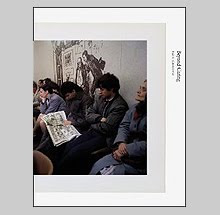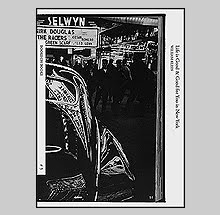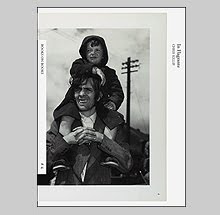Chemises by Malick Sidibe
Malick Sidibe started his career as a young gun for hire working under a French photographer Gerard Guillat nicknamed "Gege la pellicule" in
Malick exhaustively photographed each attendee of the parties either single or in small groups that pose against the walls or in corners of the room of the club. As described in the afterword by Jerome Sother, he would then develop and display the photographs in paper folders so that the partiers could come around to the photo studio and pick out the photographs they wanted to purchase. Chemises is a selection of these "administrative folders" that were culled from among over a thousand that were laying around in stacks in Studio Malick.
Beyond the cataloging aspect of the party’s events and the dress of the partygoers, one of the interesting aspects of this book is to compare it to the historical events of
Towards the middle of this book, one of the "folders" is dated November 2, 1968 which was just days before a bloodless coup installed the military-led government of Moussa Traoré. Malick describes the resulting shift as, "independence was the energizing influence of young culture in my country. People went out and enjoyed themselves and had a lot of fun, and it was a very energetic place. But as the development of a socialist system took hold, imposing a police force that was in charge of taking care that people couldn't be out during the day and all that, this energy became much more constrained. So after '68, it was forbidden, for example, that women wear miniskirts. There were surveillance police who oversaw what the young people were doing. There were even times when people couldn't go out and take a walk." The next folder in Chemises is dated on December 31, 1968, but neither reservation in the excitement of the attendees toward celebration nor any conservative attitude can be found in the skirt hemlines. One might imagine being able to discern such a major transition as described by Malick as I expected to, but little seems out of the norm; the attendance seems of the same numbers, the dancing continues and the party goes on.
The edit of Chemises foreshadows the military coup as a few folders prior to the one dated November 2, 1968 is one from 1966 that shows the formation of the new military of Mali. Here we see a similar faces of the partygoers but now than in daylight and posing in uniform with rifles instead of with their favorite LPs.
Towards the mid-1970s, the parties where the youths would meet occurred less frequently and shifted to proper nightclubs instead of the improvised surprise parties. These nightclubs didn't provide the same interest to Malick so he therefore shifted his practice to camera repair and his now famous studio portraits that have been featured in other books.
Chemises is designed to look like a stack of the original folders that have been bound together in one solid block. The pages run a pleasing range of pastel colors onto which the photographs are printed with a slight detection of a shadow, giving them a three-dimensional appearance. The covers of the folders are marked with Sidibe's ballpoint scrawl of the club name and date and show the stains, tears, and ink stamps that accumulated through their use.
In a sense this is a family album -- an album that covers a dozen years of youthful gatherings that allow us to see not just the clothing trends but also the different pairings of couples as relationships shift from night to night. It portrays an
Malick Sidibe: Chemises was co-published with Gwin Zegal on the occasion of an exhibition at the Fotomuseum in
Buy online at Steidlville












